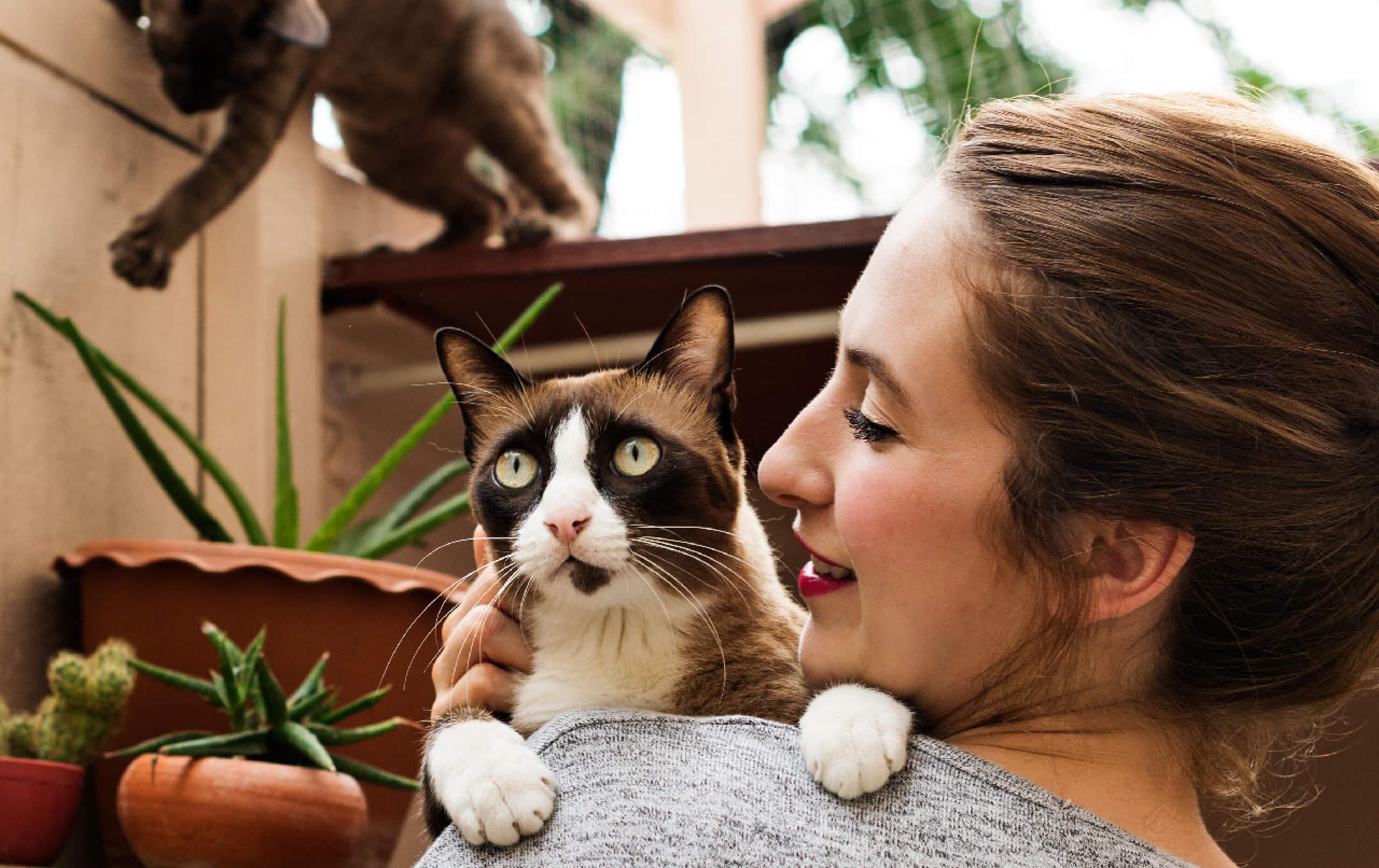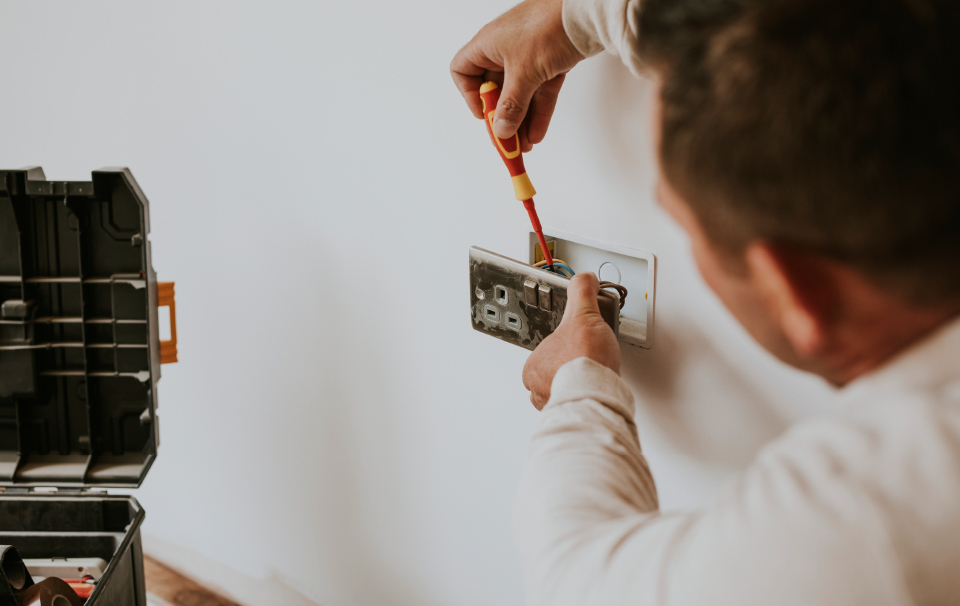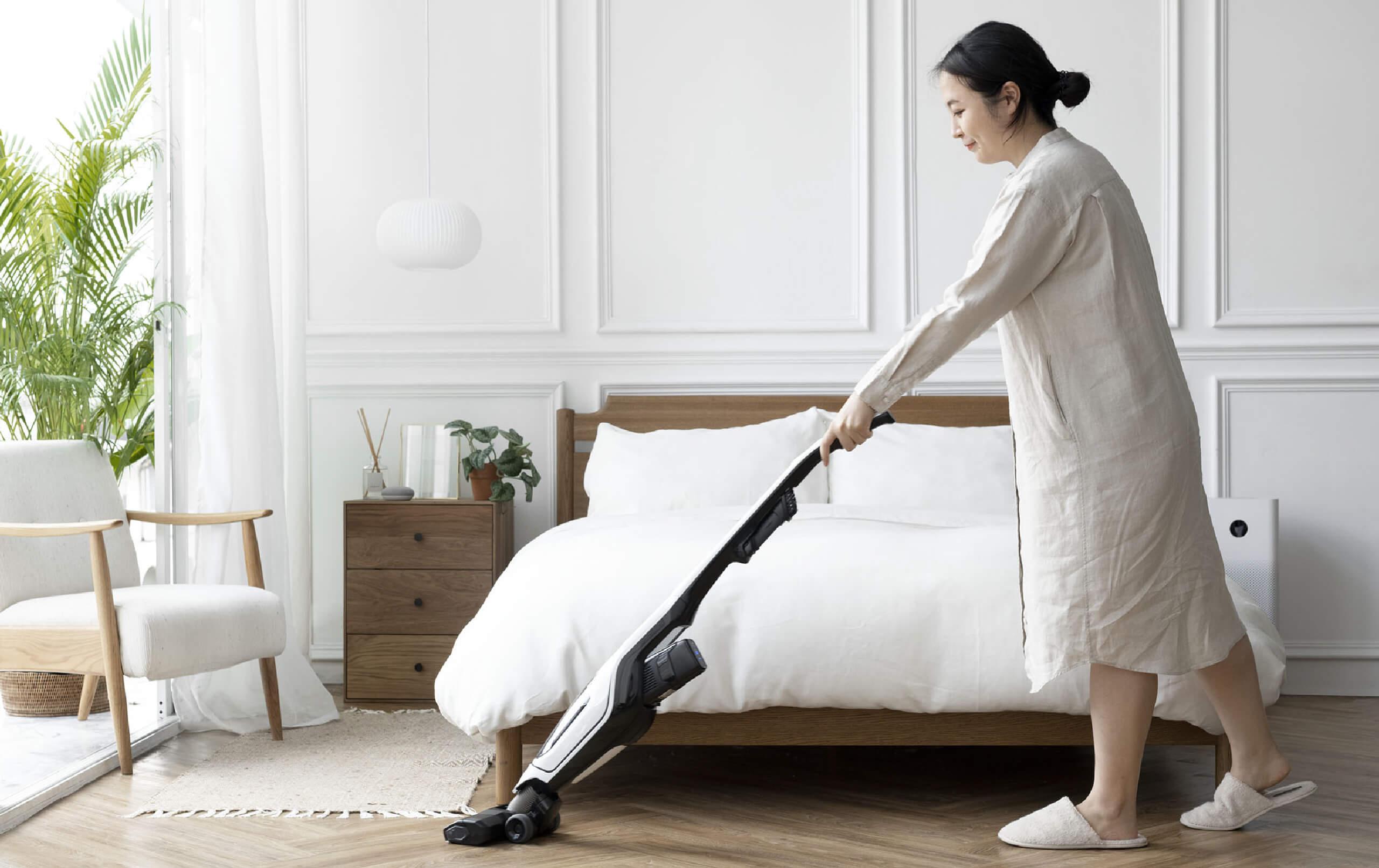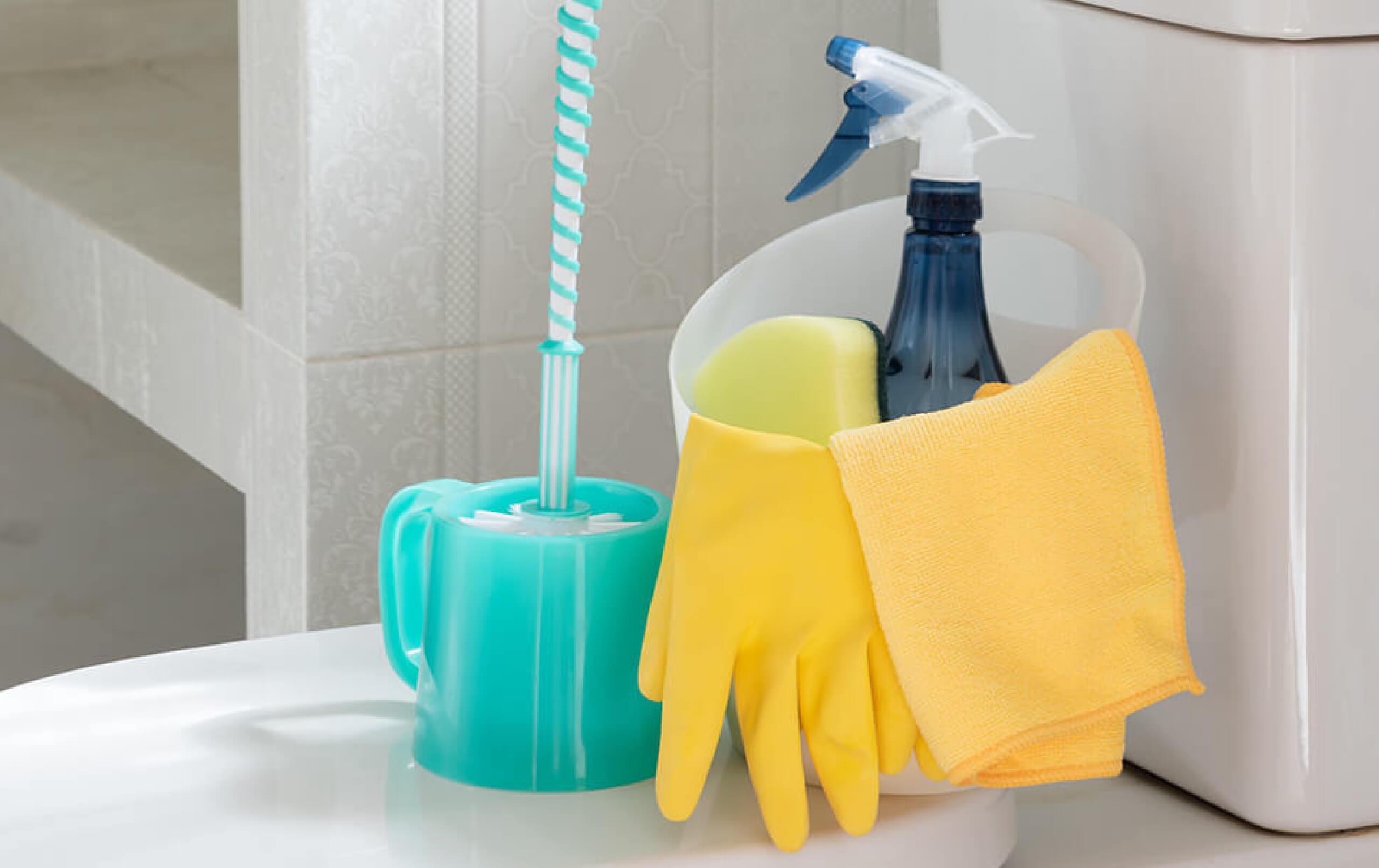How to Keep Your Pets Safer by Animal Proofing Your Home
7 minute read

Our pets bring more joy to our lives than we could ever expect. They are our little stress busters, our loyal friends. They make our lives joyous, teach us to be affectionate, and patient. A cat’s purr or dog cuddles are shown to instantly reduce anxiety and stress.
That said, pets are equally mischievous and consider everything around them as their own. They are naturally curious and unaware of what may harm them. So if you are bringing home a new puppy/ kitten or just want to ensure that your home is the safest place for your pets, it is important to follow certain safety measures to remove any potential hazards for them and prevent accidents, while keeping your property in good shape.
Here are essential pet-proofing tips for each room for a pet-friendly home.
Contents
Room-to-room pet proofing ideas:
The first step to pet-proofing your home is by evaluating the potential threats for each room. A simple way to do this is by walking around the house, carefully inspecting each room. Note down all the elements that you think would need to be pet-proofed. Does the furniture need to be bolted to the walls? Are there open sockets closer to the floor? Evaluate each room from a pet's perspective. Once you have determined the threats, the next step is to plan and implement the safety precautions.
Here are a few potential threats for each room, followed by our safety tips to avoid them, and make your home comfortable for your furry friends.
1. Living room
Potential threats
Electric cords:
Younger pets like puppies and kittens love to chew on electrical cords and play with dangling wires. Naked wires or uncovered sockets can be easy to reach for pets and can electrocute them if left unattended.
Plants:
Household plants add life to your house, but some varieties of plants can be harmful to your pets. Some plants like sago palm, aloe vera, daffodils, etc. are toxic to dogs, while lilies, tulips, and more can pose a serious risk to cats. Here is the ASPCA database of Toxic and Non-toxic plants for pets at home.
Fireplaces:
Although pets like to snuggle in front of fireplaces; open fires, wood logs, and smoke can be a serious hazard to them. It is important to ensure that they are out of reach from the fires or flying sparks, fire starter logs are stored away from them and the rooms are well ventilated, equipped with carbon monoxide detectors and fire alarms. Heavy furniture:
There's no stopping when pets sprint across the house. They love to jump from one piece of furniture to another. Cats enjoy climbing up furniture- be it bookshelves, tables, or TV units. Making sure that the furniture pieces are stable, locked, and have no sharp edges is crucial in ensuring pets' safety while they zoom around.
Safety tips
Here are important tips to pet-proof your living room:
- Conceal all the wires hanging or lying around the house.
- Get a wireless home security system or purchase a pet proof, cord protector. Install socket covers at all the low lying points.
- Make sure all vents are covered.
- Use pet-friendly plants and hang them at elevated places.
- Routinely inspect and clean hidden corners of your home.
- Keep an eye on pets when the fireplaces or candles are lit. Install carbon monoxide detectors and fire alarms.
- Use a glass door or fire a screen.
- Keep a fire extinguisher handy.
- Recheck your furniture stability and tighten the hooks periodically.
- Install corner protectors for all furniture items.
PRO-TIP
Keep fragile items firmly locked or away from the reach of your pets.
2. Bedrooms
Bedrooms are our place to unwind and get some shut-eye. However, they are also a host to several hazardous items for pets. Other than the above-mentioned wires, furniture, etc., here are a few bedroom-specific hazards.
Potential threats
Medications:
Medications, if ingested, can be life-threatening as they can risk the pet’s digestion system and organs.
Daily use items:
Small items that we use around daily can be a choking risk for your pets, for example, they can chew on toys, jewelry, socks, coins, etc.
Safety tips:
- Keep your bedroom doors closed when you are not at home to supervise your pets.
- Make sure the drawers and cabinets are locked at all times.
- Use separate medicine boxes for pets and humans so that you do not mix them up.
- Don't leave socks, appliances (hair dryers, shavers) or clothes on the floor.
- Make sure that the curtains are properly fixed on the walls and there are no exposed wires.
PRO-TIP
Keep lotions, medications, and cosmetics away from pets.
Here is a step-by-step video, guiding you on what to do if your dog is choking or is in distress.
3. Kitchen
Most accidents happen around the kitchen because they have numerous potential dangers for pets. From food items to sharp knives, here are a few things to safeguard your pets against.
Potential threats
Food:
Not all foods that are good for you are good for pets. Even seasoned pet owners can be unaware of food items that could be toxic to their pets. Coffee, onion, garlic, avocados, raisins, and chocolate are some of them. Here is a list of potentially dangerous food items for pets.
Garbage cans:
Pets love to sniff around and explore. Rummaging through the garbage cans could be dangerous for their health, especially since food starts to decompose when trashed.
Kitchen objects:
The kitchen is full of sharp objects, stoves, flames that can cause serious injuries to the pets if ignored.
Pet food:
If you store pet food in kitchen cabinets, pets can access it, and run the risk of overeating and falling sick.
Safety tips
- Pack all food and beverages and store them in cabinets to prevent snooping pets from reaching them.
- Train your pets from entering the kitchen or use dog proof fence to keep them away.
- Clean as you cook to avoid pets from eating fallen food off the floor.
- Store knife, scissors, etc. in cabinets after use. Avoid piling dishes on counters or near the sink.
- Prevent pets from opening the garbage lid and use a cat/dog proof trash can.
- Install child locks on cabinets and drawers so pets can't open them.
PRO-TIP
Turn off the kitchen appliances when not in use.
4. Bathrooms
A cluttered and unsupervised bathroom is a play haven for pets. They love wreaking havoc, playing (and sometimes accidentally harming themselves) with soaps, liquid detergents, dental floss, and vitamins, etc.
Potential threats:
Toilet:
Young, untrained dogs have a tendency to drink from the toilet. Most toilets have recycled and treated water which could lead to severe distress for pets. In some instances, puppies can fall and drown in the water.
Washer/ dryers:
Unfortunately, places behind the washers or dryers are attractive napping spots for cats and dogs. They look around for small places and nooks such as inside the washer which could be dangerous.
Plugs/ sockets:
Pets are curious about everything in their surroundings and try to play with it. Washrooms have high ampere sockets, which pets can access with paws and tongues. Be sure to keep plugs inserted in the sockets or cover them after use.
Bath accessories:
Pets can reach and get hurt from sharp razors, clips, etc. Ensure that these are stored away safely, out of reach of pets.
Safety tips:
- Always keep the toilet lid closed. Install child safety locks if your pet can open them.
- Check the washers and dryers before using.
- Store away all the razors, makeup, ointments etc. after using.
- Install child locks on easy to reach cabinets to keep little paws from opening them.
- Use socket covers to avoid pet injury.
- Keep trash bins closed and locked.
- Drain bath tubs promptly to avoid the risk of drowning.
PRO-TIP
Cover your toiletries when not in use.
5.Garage
Listed above are all the important indoor areas to secure for pets. However, it is equally important to pet-proof the outdoor areas of your home, so that they can enjoy their time outside, without running any risks of their safety.
Potential threats
Chemicals:
The garage is storage for numerous chemicals and industrial products that can harm our furry friends. These chemicals could be life-threatening for pets. Chemicals like antifreeze (ethylene glycol), petrol or diesel, paints, etc. need to be stashed with care.
Tools:
Toolboxes with sharp nails, hammers, drills, etc. can lead to injuries to pets if they reach them. Store these objects in locked cabinets.
Safety tips:
- Lock your garage door when not in use.
- Store all industrial chemicals on higher shelves.
- Tap on your car before starting the engine (to ensure a kitten is not hidden inside or on a tire for warmth).
- Keep small items (nuts, screws, bolts) in closed, tight containers.
Adopting pets is the same as being a parent. You need to hide a few things (wires, sharp tools, etc.) and probably buy a few things to keep your pets safe and happy. Here is a list of things you can buy online for a pet-friendly home.
| No Chew Spray | Keep your pets away from all the essential papers or things that can harm them – electric cords, documents, chemicals. Use this spray on things you do not want your puppy to chew on for pet security. | |
| Pet Bed | Now keep your pets away from small unsafe nooks (washers, car bonnet, dryers) and give them this super comfy chew-proof dog bed. | |
| Pet Toy |
| |
| Pet Gate | Use a dog gate at the entrance of your staircase or kitchen to stop them from running around and keep them safe. |
Love your pet but want to protect them and your home? Be patient, invest in getting them trained to identify commands and areas which they can/ cannot enter. Allocate specific areas for them like the living room, or den, to play or rest in and set some ground rules while they are young. Pets bring immense joy to our lives, and it is our responsibility to protect them from any unknown harm. Hope these tips help you and make your abode a safe one for your pet.


















